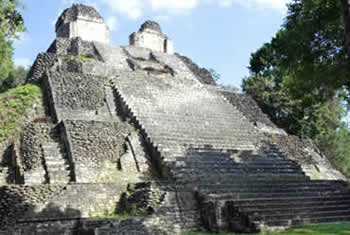Dzibanché
The settlement covered an area greater than 15 square miles and it has four groups with monumental architecture:Dzibanche or the Main Group, Central Complex or Lamay Group, Tutil and Kinichna.
LOCALISATION
The site is 50 miles northwest of the city of Chetumal. You can get there on the Chetumal-Escárcega Federal Highway 186, and at the Kilometer 58 marker take the road nine miles to the village of Morocoy. When you get there, go a mile and a quarter on the road to San Pedro Peralta and turn left when you see the sign.
Historical Overview
Dzibanche, meaning “writing on wood” in Maya, was a Mayan city which flourished from 300 to 1200 AD. It was discovered in 1927 by Thomas Gann, who gave it this name because of the calendar signs he found carved into wood at Temple VI, or Temple of the Lintels. The Temple of the Owl and the Temple of the Cormorants have outstanding architecture. These, along with those of the North and South, form the Xibalba courtyard. The Gann Plaza is home to Building XIII, or the Building of the Captives, with representations of people who were forced into submission. Dzibanché-Kinichná actually refers to a set of complexes filled with monumental architecture, linked not only by a common history, judging by the uniformity of the styles they share, but also physically, through the sacbeob or white roads that join the main complexes.Its main chronology covers most of the Classic period, from 300 to 900 AD.


